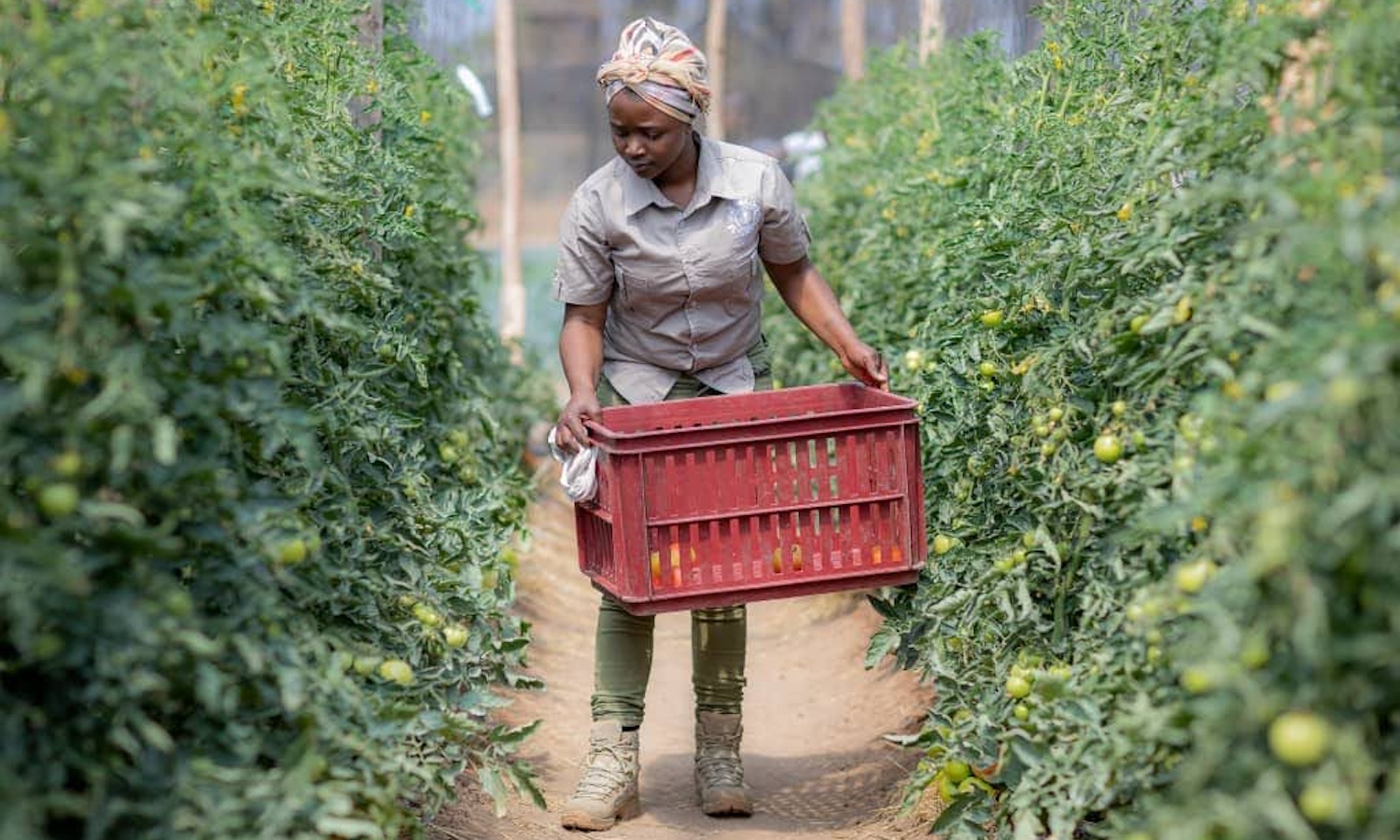Diversification is the key to the resilience of our food systems. This is true around our climate-impacted world, but especially so across Africa and in my home country of Zimbabwe. Through both my academic research and my work as a farmer, I have come to understand farmers’ challenges when it comes to resilience. I have also learned about, and advocate for, opportunities. African indigenous vegetables hold massive untapped potential for creating a diversified and nutritious climate-resilient system.
By diversifying food systems, we can build a more resilient and sustainable system capable of adapting to climate and market fluctuations while also providing more nutritious food for local consumers. African Indigenous vegetables, for example, are naturally adapted to grow locally and are packed with vitamins, minerals, and antioxidants, which can help combat the malnutrition and dietary deficiencies common in most African countries.
Growing a greater variety of crops helps with climate adaptation and works as a mitigation measure as well. Most Indigenous vegetables local to my region in Zimbabwe are drought-resistant and many, like amaranth, can thrive in harsh conditions. The wider range of these crops, the more stable the food supply. Unfortunately, many farming practices in Africa are based on monoculture, so if a disease or a drought hits a key growing region, the entire system suffers. Incorporating indigenous vegetables into our local farming system can disrupt this pattern. It can also promote healthier soil, reduce pest problems, and boost rural economies.
The shift toward farm diversification has its share of challenges, of course. In my experience in Zimbabwe, I’ve seen funding and markets as the two major roadblocks. Securing seeds and equipment and building climate-smart infrastructure like greenhouses, requires funding.
Diversifying into a new product also means finding a market for it. This can be challenging, especially for niche products. Farmers may need to invest in marketing and promotion to secure buyers.
Diversification offers opportunities for additional income streams, however. Farmers can potentially tap into higher-value markets with specialty crops and value-added products. This can help them with commodity price fluctuations and improve their overall financial resilience. As mentioned earlier, a diversified farm isn’t reliant on the success of a single crop or livestock type. If one product suffers due to pests or weather events, others can still provide income. Integrating livestock with crops can create a closed-loop system where manure provides fertilizer and reduces reliance on external inputs. Having a wide variety of enterprises opens doors to new markets enabling rich to high-earned markets.
Those who have been in the farming for years can face challenges shifting from a familiar crop to a new one that suits the current conditions. Mentorship opportunities and farmer-to-farmer knowledge sharing and training can help bridge that gap. Equipment sharing and community information sharing about financing helps to adapt quickly to the changes. Targeted grants and low-interest loans can also help mitigate financial risks associated with adopting new practices, especially for the youth population such as myself. Africa has the largest youth population in the world and we will need to support their success to be successful in the food security space. And increasing funding for research on climate-resilient and high-value diverse crops includes developing improved varieties and dissemination of knowledge about their cultivation and utilization.
To better support farmers willing to diversify their food production we need to conduct local assessments to identify specific challenges to be addressed. A recent initiative from the Environmental Defense Fund is a welcome step in this direction. Fostering collaboration between governments, research institutions, NGOs, and private sector actors will help create a comprehensive support ecosystem for diversification efforts. Data collection and sharing mechanisms to track the progress and impact of diversification initiatives can be used to refine strategies and measure success.
In Zimbabwe, we have seen that developing a well-defined value chain was a game changer for many farmers who relied on African indigenous vegetables. Their incomes and livelihoods improved considerably. By incorporating indigenous crops, food systems become more diverse, nutritious, and adaptable to the challenges faced by Africa’s agriculture. This translates to greater food security, improved health outcomes, and a more sustainable future for the continent. More broadly, we can empower producers around the world to adapt and diversify their farms by implementing these changes and focusing on collaboration. This will lead to a more resilient, sustainable, and nutritious food system.
Articles like the one you just read are made possible through the generosity of Food Tank members. Can we please count on you to be part of our growing movement? Become a member today by clicking here.
Photo courtesy of Paida Moyo







